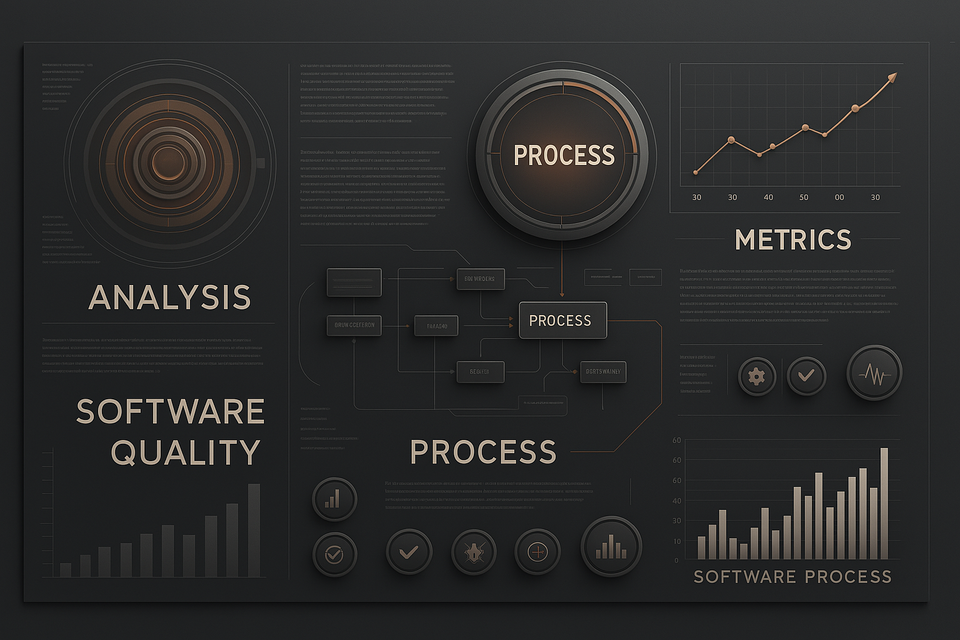Why Process Thinking Separates Great QA Engineers from the Rest

In the world of software development, QA engineers are often perceived simply as testers—people who click around and report bugs. But that view severely underestimates what the best QA engineers actually do. One of the most valuable skills that sets apart high-impact QA professionals is process thinking.
I’ve noticed over the years: many QA engineers don’t think in terms of processes. They think in tasks. Test this feature. Log this bug. Automate that case. And while that might get the job done, it doesn’t build long-term quality. It doesn’t scale. And it definitely doesn’t elevate your role in the team.
Let me be blunt: if you’re not thinking in processes, you’re missing out valuable contribution to your team and valuable opportunity in elevating your role where you are.
What is Process… And What’s a “No-Process” Process?
Every outcome comes from a series of steps. But just having steps doesn’t mean you have a process. That’s the trap of the “No-Process” process—where things happen in some order, and because work gets done, people assume there’s a system in place.
A real process is intentional. It’s a defined sequence, done a certain way, with specific checkpoints—designed to give you a predictable outcome. It’s how you control quality. You follow the process because you want the outcome to look a certain way every time.
But no process is perfect. Things will break. And that’s actually the second purpose of a process: it gives you something to improve. When something fails, you have a structure to examine and refine. That feedback loop doesn’t exist in the No-Process process. You can’t fix what you’re not tracking. And that’s why teams without real processes stay stuck in reactive mode.
What is Process Thinking?
Process thinking means you’re not just doing the work—you’re thinking about how the work flows. You're looking at the full picture: planning, design, development, testing, and release. You’re not reacting to bugs—you’re asking why they happen, and how to prevent them.
It’s about understanding dependencies, spotting repeatable failures, and designing better paths to quality. When you adopt this mindset, you're no longer just testing software. You're shaping how it’s built.
That shift changes everything. You start seeing where things break, where time gets wasted, and how to fix it at the root. You build scalable strategies. You help teams move faster with le
The Consequences of Missing Process Thinking
Many QA engineers join companies with messy or undocumented workflows. They’re disconnected from development activities from day one; then, given Jira tickets and asked to test and file bugs. Over time, they may fall into a passive mode of “just doing the job.”
However, this results in unfavorable consequences to both QA and teams:
- Burnout and Frustration: QA engineers can feel stuck doing repetitive, low-impact tasks, leading to disengagement.
- Unscalable Testing & Missed Strategies: as QA tests haphazardly and under pressure, key test strategy could be missed and no optimization mindset is applied.
- Quality becomes luck, not design: you haven’t designed how to get to the desired outcome.
- Bug Escapes: bugs keep slipping through because the system is reactive, not preventative.
- Low Influence: QA doesn’t participate in how features are shaped and how delivery is achieved.
- Career Plateau: It’s hard to grow into leadership when your work is purely reactive.
- Missed opportunities to improve how teams build and ship software.
How to Start Thinking in Processes
You don’t need permission to start. Here are practical steps any QA engineer can take today:
- Observe the workflow
Map out how features move through the pipeline. Identify blockers, delays, and vague handoffs. - Look for patterns
Are you seeing the same bugs over and over? That points to a deeper process issue. - Ask better questions
Don’t just ask "What’s broken?" — ask "Why did this bug make it to QA?" or "What could’ve caught this earlier?" - Name the friction points
Is QA always late to the party? Are stories half-baked when you get them? Are releases rushed? Good. Now you know what to fix. - Collaborate with team & propose small improvements
Introduce checklists, improve documentation, suggest earlier QA involvement in sprint planning, work with Dev and Product to discuss and improve dev process and product input. - Track the impact
Use metrics like bug recurrence rate, test coverage growth, or reduction in QA cycle time to show value. - Own the follow-up
Don’t wait for someone else to track if your idea worked. Show it. Share it. Drive it.
QA Engineers as Change Agents
The best QA engineers aren’t just testers — they’re process architects. They improve how the team works, not just what the team ships. And that’s what makes them indispensable.
Whether your company values QA strategy or not, your growth starts with how you approach the job. Adopting process thinking transforms you from a task executor into a quality leader.
Got an Want to Go Deeper?
I’m working on a detailed guide with templates and step-by-step strategies to help QA engineers bring process thinking into their daily work — even in teams that don’t require it.
👉 Subscribe to get early access to this guide when it launches.
Your Turn
I’ve seen how powerful process thinking can be in transforming the QA role—but I’ve also seen how hard it is to introduce when the team or company doesn’t value it.
So I want to hear from you:
- What problems do you see in your team that come from lack of process?
- Did you ever try to fix it by introducing a new process—and got pushback or rejection?
- Or maybe you succeeded and saw a real impact?
Tell us your story. Drop it in the comments. I’ll be reading everything. Maybe we can learn from each other—and push this craft forward together.